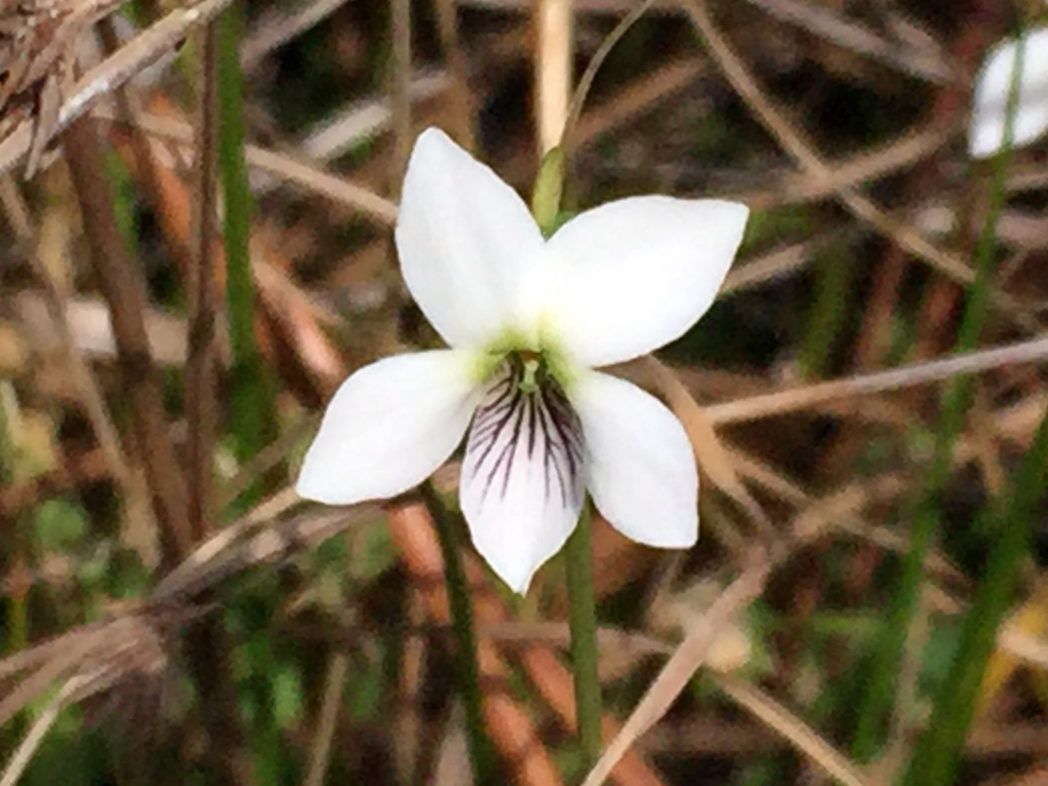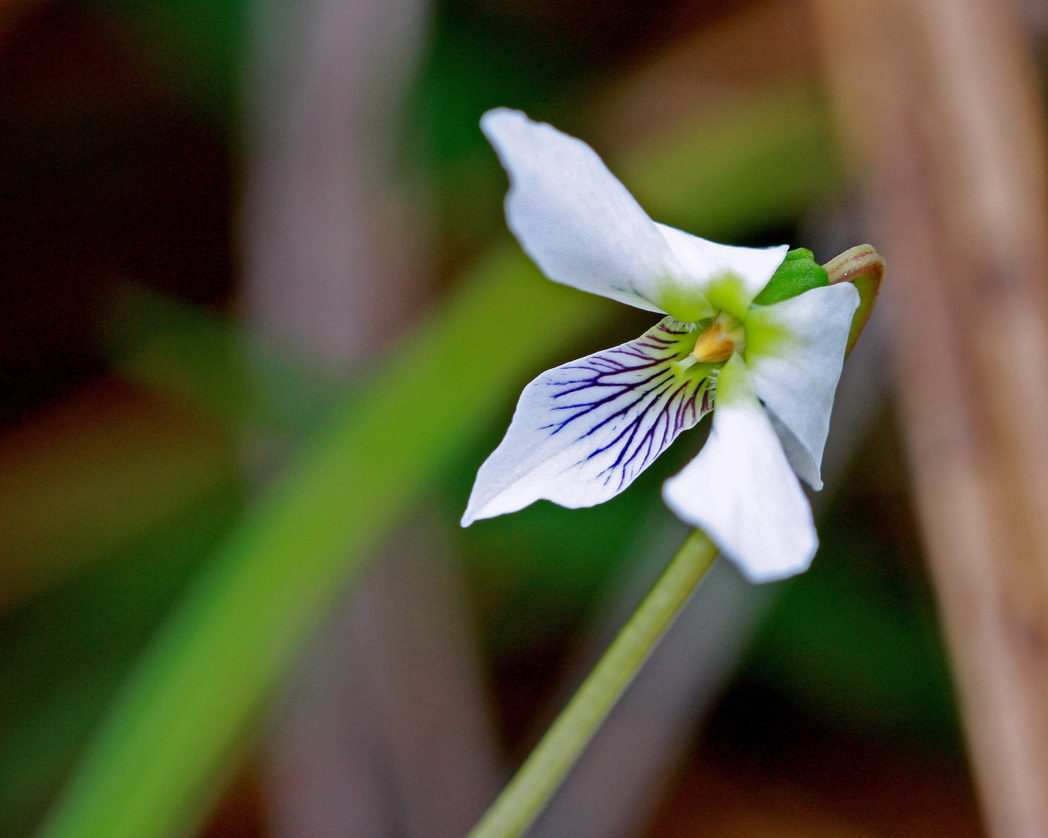Bog white violet
Pictured above: Bog white violet (Viola lanceolata) by Mary Keim. Click on terms for botanical definitions. View post as a PDF.
Also known as Lanceleaf violet, Bog white violet is a diminutive perennial wildflower that occurs naturally in bogs and along the edges of ponds, marshes and other wetlands. It blooms in early winter through summer, but may bloom year-round. Its sweetly scented flowers attract bees and butterflies, while its seeds are enjoyed by various birds and small mammals.
Bog white violet’s solitary flowers are borne on delicate green to reddish-purple pedicels and are often nodding. Each bloom is five-petaled and bright white with obvious purple, vein-like streaks on the lowermost petal. These “veins” act as nectar guides for pollinators. Lower lateral petals may or may not have light purple streaking. Sepals are light green. Leaves are relatively long (up to 6”) and linear to lanceolate (hence the scientific epithet), resembling blades of grass. Fruits are green, elliptical capsules that bear many tiny brown seeds. The plant spreads by underground rhizomes.

Family: Violaceae (Violet family)
Native range: Nearly throughout
To see where natural populations of Bog white violet have been vouchered, visit florida.plantatlas.usf.edu.
Hardiness: Zones 8A–10B
Soil: Moist to wet, acidic soils
Exposure: Full sun to full shade
Growth habit: 2–6” tall
Propagation: Seed, division
Garden tips: Bog white violet cannot tolerate dry conditions, making it difficult to maintain in a typical home landscape. Its proclivity to spread via rhizomes makes it unsuitable for containers. This plant is best admired in its natural setting.
For more information on other Viola species, see:

